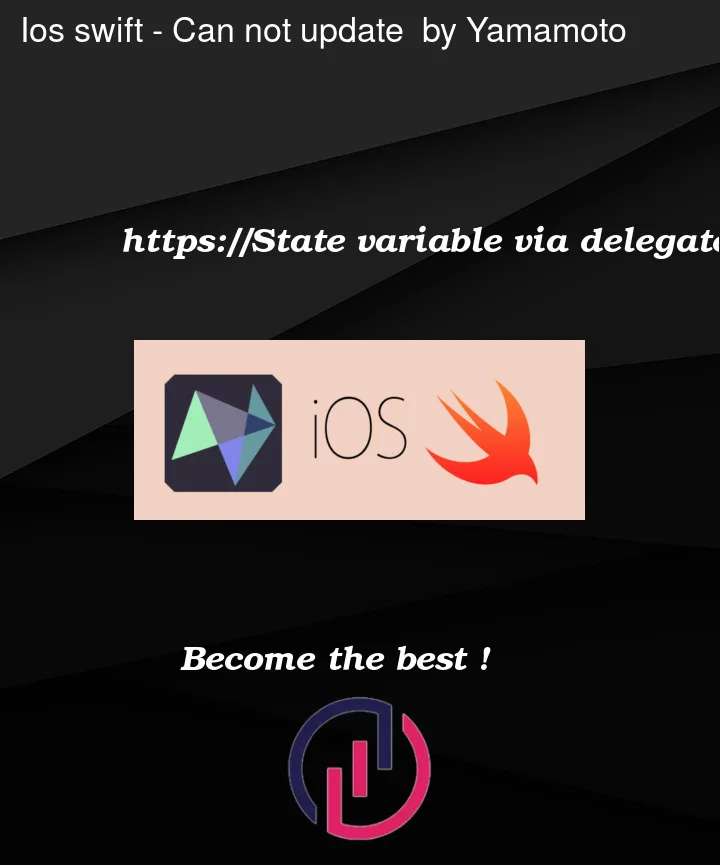The following is a minimum example code with the problem.
struct TestView: View {
@State var text = "Hello"
let useCase = TestUseCase()
init() {
useCase.output = self
}
var body: some View {
Text(text)
.onAppear {
// ① useCase.output = self
useCase.show()
}
}
}
extension TestView: TestUseCaseOutput {
func showText(text: String) {
self.text = text
}
}
class TestUseCase {
var output: TestUseCaseOutput?
func show() {
output?.showText(text: "Changed")
}
}
protocol TestUseCaseOutput {
func showText(text: String)
}
This code changes the text from "Hello" to "Changed" when the view is displayed, but the change is not reflected. The showText method was called, but it had no effect. I also found that if I set the delegate at ①, the text was updated correctly.
Can anyone tell me the cause of this problem?




2
Answers
SwiftUI views are structs, and therefore immutable. Whenever a SwiftUI changes, a new instance of that view struct is created.
When you update
text, SwiftUI needs to create a new instance ofTestView. But, the new instance hastextset toHello(and it was also have a new instance ofTestUseCase) so you don’t see any change.The sequence of events is:
TestView– This is initialised withtext = "Hello"textwhich triggers SwiftUI to recreateTestViewTestView is initialised withtext = "Hello"`In SwiftUI no object should ever need to hold a reference to a
View.The
selfyou store in yourTestUseCaseinstance will be thrown away as soon as the view is updated. It simply isn’t useful to try and hold references to SwiftUI views.You should structure your code so that views respond to changes in your model (Via
@Publishedfor example). Your model should never try and update a view directly.You are mixing up the old
Objective-Cand reference type related protocol/delegate pattern with modernSwiftUI. That’s not a good idea.Use the
@ObservableObject/@PublishedpatternSwiftUIprovides. It’s specially designed forSwiftUIlightweight views which are structs unlikeUI/AppKitreference type views.Instead of creating a custom protocol adopt
ObservableObject, movetexttoTestUseCaseand mark it as@Published.In the view make
useCasea@StateObjectwith – together with theObservableObjectprotocol – enables the functionality to refresh the view immediately whenevertextinuseCasechanges.As you can see it’s much less code and – more important – it’s efficient and it works.